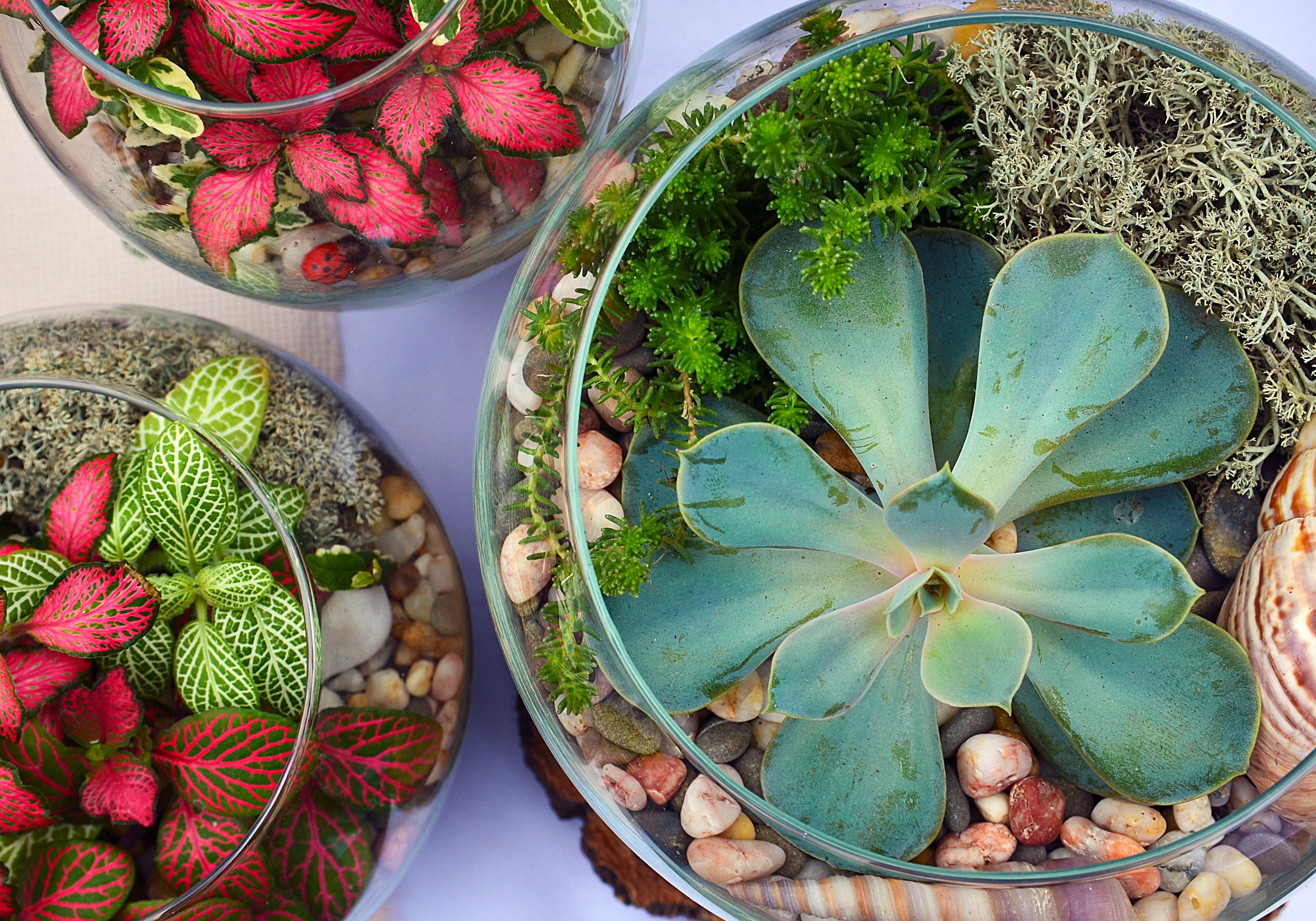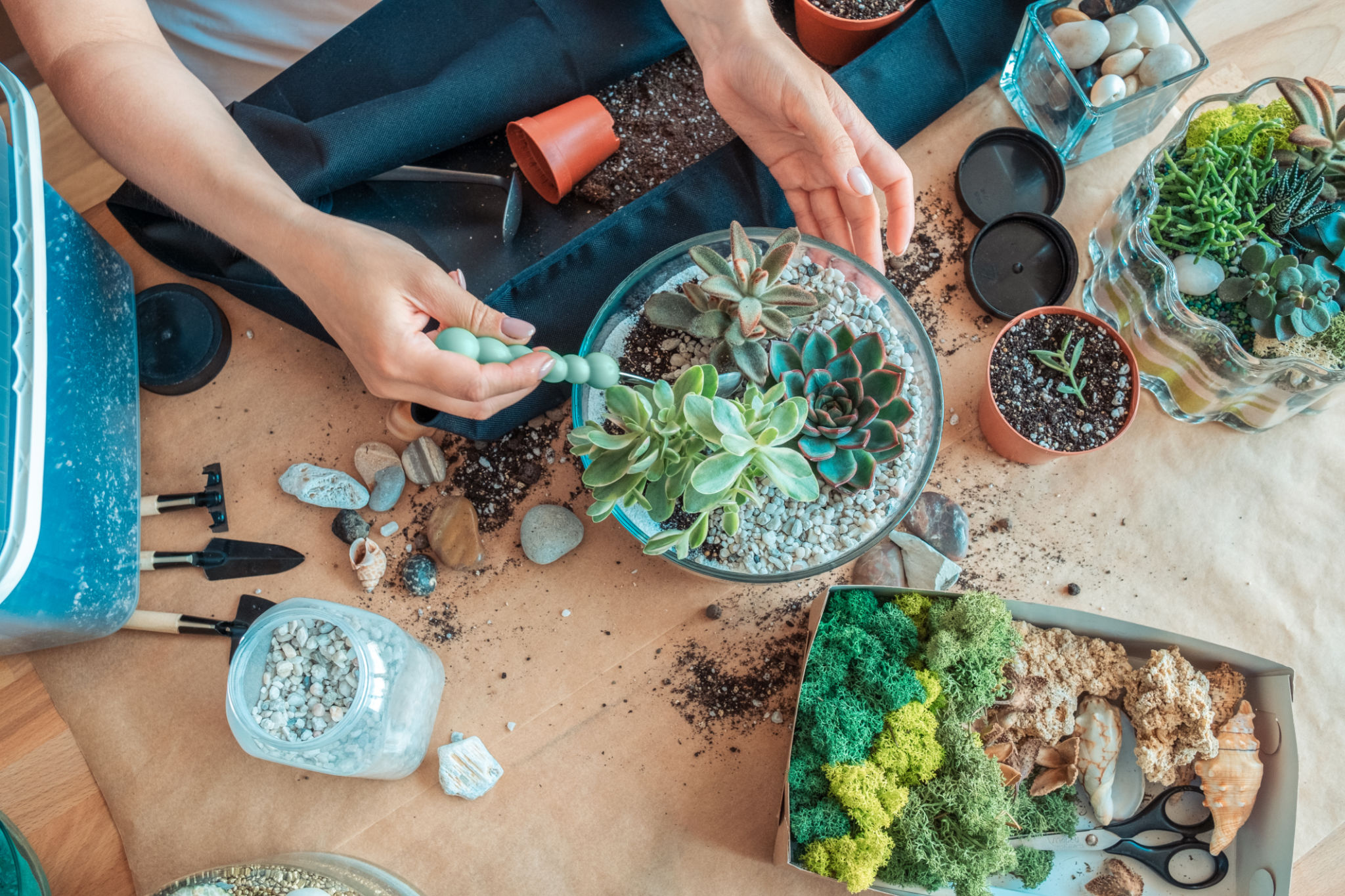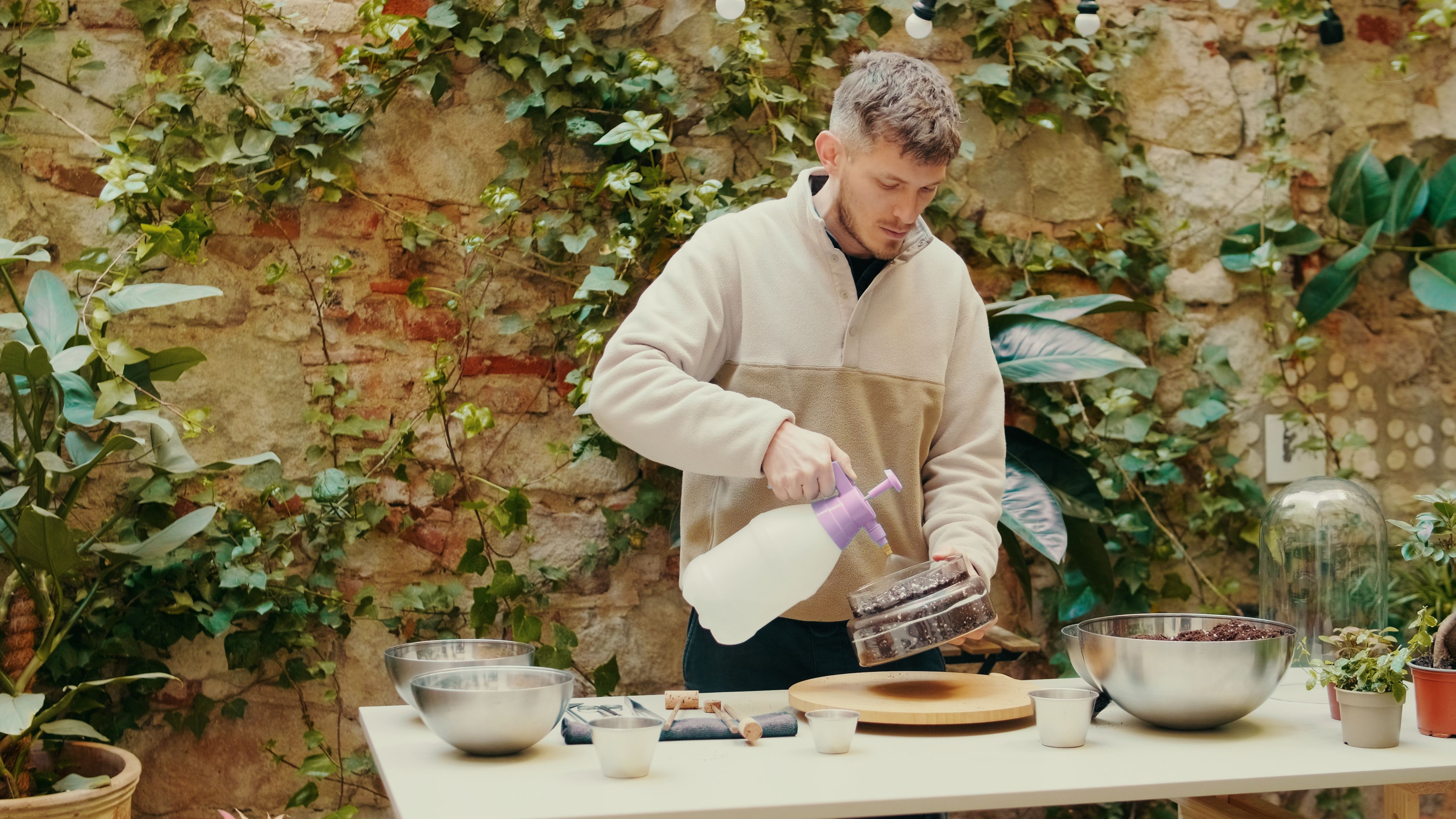Creating Your Own Glass Vase Terrarium: A Simple Guide
Creating your own glass vase terrarium is a delightful way to bring a touch of nature into your home. Terrariums are not only visually appealing but also low-maintenance, making them perfect for both plant enthusiasts and beginners. In this guide, we'll walk you through the simple steps to create your very own glass vase terrarium.
Gather Your Materials
Before you start, gather all the necessary materials. You'll need a clear glass vase, small stones or pebbles, activated charcoal, potting soil, and a selection of small plants or succulents. Additionally, have some decorative elements like moss, miniature figurines, or colored sand to add a personal touch to your terrarium.

Materials You'll need:
- Glass Vase: Choose a clear glass vase with a wide opening if possible, as it makes planting easier. Our Glass Terrarium with wooden base and lid is perfect for this project.
- Drainage Layer:
- Small pebbles, gravel, or lava rocks (about 1-2 inches)
- Charcoal (horticultural or activated charcoal, available at pet stores or garden centers), this helps with odor and keeps the terrarium fresh.
- Substrate (Soil):
- Potting mix (a good quality, well-draining mix)
- Sphagnum moss or coco coir (optional, for moisture retention)
- Plants:
- Choose small, slow-growing plants that thrive in high humidity. Good options include:
- Ferns: Maidenhair fern, button fern, bird's nest fern
- Mosses: Sheet moss, mood moss, cushion moss
- Small tropical plants: Fittonia (nerve plant), Peperomia, miniature ivy, baby tears
- Air plants (Tillandsia): If you're going for an open terrarium style.
- Choose small, slow-growing plants that thrive in high humidity. Good options include:
- Tools:
- Long tweezers or tongs (for placing small plants)
- Long-handled spoon or small trowel (for scooping soil)
- Spray bottle with water
- Scissors (for trimming plants)
- Cleaning cloth (for wiping the inside of the vase)
- Decorations (Optional):
- Small rocks, polished stones
- Miniature figurines
- Shells
- Small pieces of driftwood

Choosing the Right Plants
Selecting the appropriate plants is crucial for a thriving terrarium. Choose plants that thrive in humidity and fit comfortably within the size of your vase. Succulents, ferns, and air plants are popular choices due to their compact size and low maintenance requirements. Make sure to consider the lighting conditions in your home when selecting plants.
For beginners, it might be easier to start with succulents, as they require less moisture and are more forgiving in terms of care. Alternatively, if you prefer a lush, green look, opt for ferns or mosses.
Assemble Your Terrarium
Once you have all your materials ready, it's time to assemble your terrarium. Follow these simple steps:
- Layer the base: Start by placing a layer of small stones or pebbles at the bottom of the vase for drainage.
- Add charcoal: Add a thin layer of activated charcoal on top of the pebbles. This helps keep the terrarium fresh by filtering impurities.
- Pour in potting soil: Add enough potting soil to cover the roots of the plants you’ve chosen. The depth will depend on the size of your plants.
- Plant your selections: Make small holes in the soil and gently place your plants inside. Be careful not to overcrowd them.

Add Decorative Elements
To make your terrarium uniquely yours, add decorative elements such as moss, colored sand, or small figurines. These can enhance the visual appeal and create a mini landscape within your vase. Consider using natural elements like stones or shells for an earthy touch.
When arranging these elements, maintain balance and avoid overwhelming the plants. A few strategically placed items can create a beautiful focal point.
Caring for Your Terrarium
Once your terrarium is assembled, it requires minimal maintenance. Place it in an area with indirect sunlight and water sparingly. Overwatering is a common mistake, so ensure the soil is dry before adding more water.

Long-Term Maintenance
To keep your terrarium looking its best, occasionally trim any overgrown plants and remove dead leaves. If you notice mold or excessive moisture, open the top of the vase for a few hours to allow airflow. With proper care, your glass vase terrarium can thrive for months or even years.
Creating a glass vase terrarium is a rewarding project that combines creativity with nature. Whether you’re looking to brighten up your living space or create a unique gift, this simple guide provides all you need to get started on your botanical journey.
